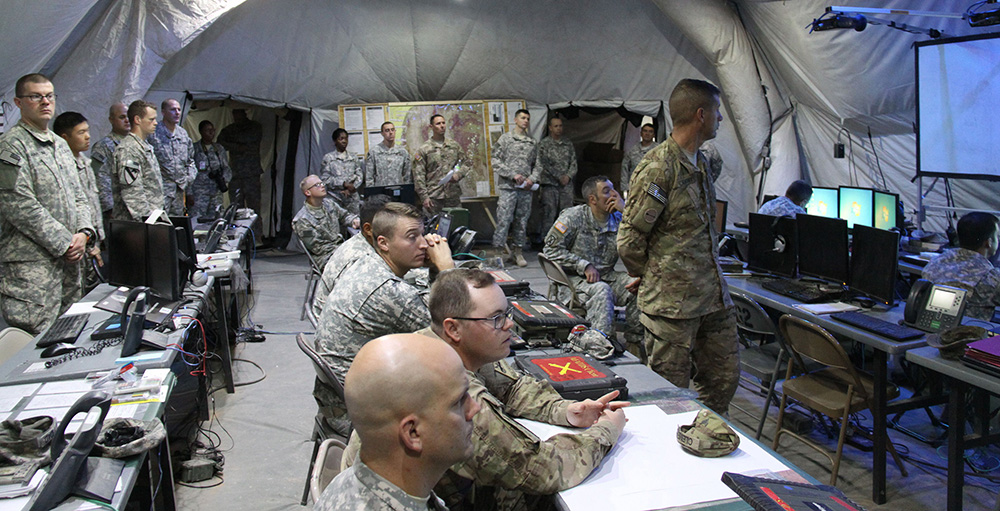
by Claire Heininger, PEO C3T
ABERDEEN PROVING GROUND, Md. (May 12, 2016) — What should a command post look like? Ask three different commanders and you’re likely to get three different answers — even if they’re in the same unit.
That’s one challenge the Army is facing as it works to deliver the next generation of command post equipment to support a more agile, expeditionary force. While the right technologies now exist — from wireless tactical networks to intelligent power systems to mission command apps — how they fit together will vary by formation, echelon and phase of operation.
“It’s important not to decide what the physical form of something looks like before you understand the functional requirements,” said Col. Michael J. Ernst, U.S. Army Training and Doctrine Command (TRADOC) capability manager for Mission Command/Command Posts. “So we’re spending a lot of intellectual energy understanding how decisions are made, how commanders and organizations pass information, how they use knowledge and then try to design systems that enable that, rather than design the system and then force people to use it. The principles of agile, scalable and tailorable are really important to give us the flexibility to meet future challenges.”
The Army’s Command Post 2025 vision, approved in the fall of 2015, emphasizes the burdens posed by cumbersome, complex legacy command posts that require hundreds of feet of wires and cables, a deluge of transit cases and tents, and an entire day and a platoon of Soldiers to assemble. The vision aims to reduce that footprint by introducing integrated, scalable command post models that enable expeditionary maneuver across a broad mission set — without sacrificing the advanced information technology that contributed to command post expansion in the first place.

The Light Mobile Command Post, or L-MCP, transforms into a Tactical Command Post on wheels within minutes at the halt, and includes a quick-erect tent, fold-out internet-configured table, monitors and a large screen. Prototypes such as the L-MCP are informing the Army’s efforts to deliver the next generation of command post equipment to support a more agile, expeditionary force. (Photo Credit: Edric Thompson, CERDEC)
Now, a team of professionals from across the Army acquisition, requirements, operational and research and development communities is making that vision into reality by establishing the official requirements and program structure needed to deliver next-generation command post capabilities to the force. Critical to informing their work is the feedback of commanders and Soldiers who are using command post prototypes in operational settings such as the Network Integration Evaluation (NIE) and Army Warfighting Assessment (AWA) events held at Fort Bliss, Texas. Because the command post is a system of systems composed of many diverse parts, each user brings a unique perspective on how the pieces should come together for maximum effect.
“A command post is the commander’s desk, and your desk looks different from my desk,” said Christopher Manning, acting director of the Communications Electronics Research, Development and Engineering Center (CERDEC) Command Power & Integration Directorate, which has developed several expeditionary command post prototypes for evaluation at NIE and AWA.
“It might be the exact same physical desk, but how I process information, where my technology is located, how I organize information is all different,” Manning said. “So how do you take that concept and make something that is a modular desk — a command post that allows the commander to tailor it to how they process information or are able to command on the battlefield?”
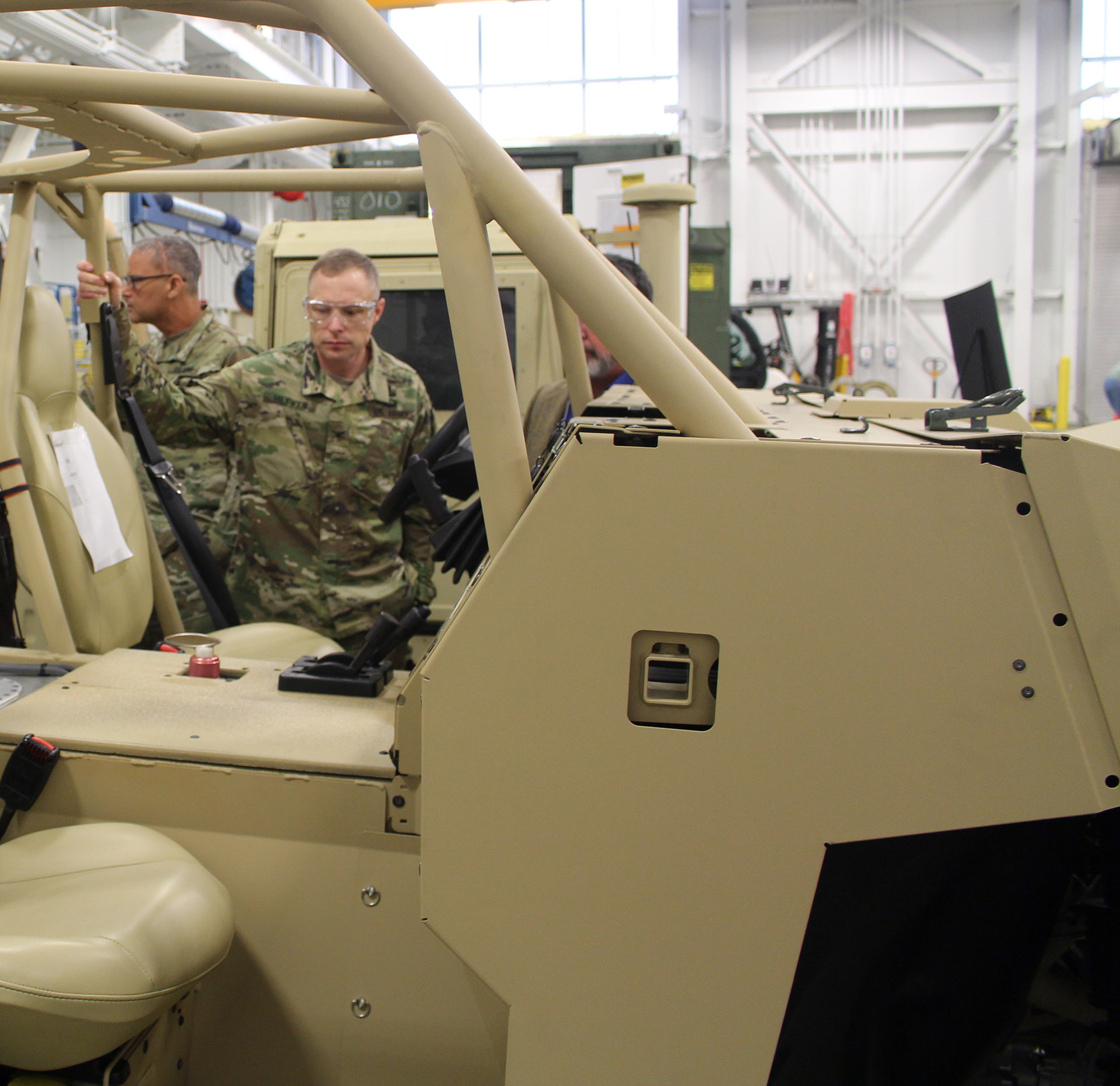
Col. Joseph Hilfiker, XVIII Airborne Corps G6, attends a design review for the Ultra Light Command Post Node at Aberdeen Proving Ground, Md. The acquisition and requirements team has sought and received operational feedback from the XVIII Airborne Corps, 1st Cavalry Division, 75th Ranger Regiment and other units on various emerging command post technologies. (Photo Credit: Kathryn Bailey, CERDEC CPI)
‘BUILDING BLOCK’ APPROACH
The team’s modular, “building block” approach to meeting command post requirements not only reflects commanders’ preferences, but also the diversity of the Army and the missions it undertakes. A lightweight Global Response Force unit conducting an early entry operation needs different command post capabilities than an Armor Brigade Combat Team executing stability operations in a coalition environment.
“There’s an incredible variety of missions, from major combat operations to humanitarian assistance and disaster relief,” Ernst said. “And they require different tools.”
However, the Army can’t afford to design a new expeditionary command post for every unit and mission, which would introduce costly challenges in training and sustainment. So the goal, Ernst said, is to provide a package of capabilities — including consolidated mission command hardware and software, secure wireless networks, intelligent power systems, efficient shelters, flexible racks and other tools — that can be fielded to an Army standard.
Units can then adapt the package to each operation, and rapidly reconfigure items like radios, projectors, screens and tables to meet their needs. Command posts will likewise leverage vehicle-mounted and mobile handheld capabilities to increase agility and enable mission command on the move.
Acting as a central integrator for these capabilities is the newly designated Trail Boss for Command Post Integrated Infrastructure (CPI2), which will manage government- and commercially-developed components across different portfolios in order to deliver a complete solution to the user community.
“Soldiers expect their command posts to holistically support mission command, so we need to develop, test and field them that way,” said Lynn Epperson, trail boss for CPI2, part of the Program Executive Office for Command, Control and Communications-Tactical. “We want building blocks that are modular, interoperable and scalable, fitting with formation type.”
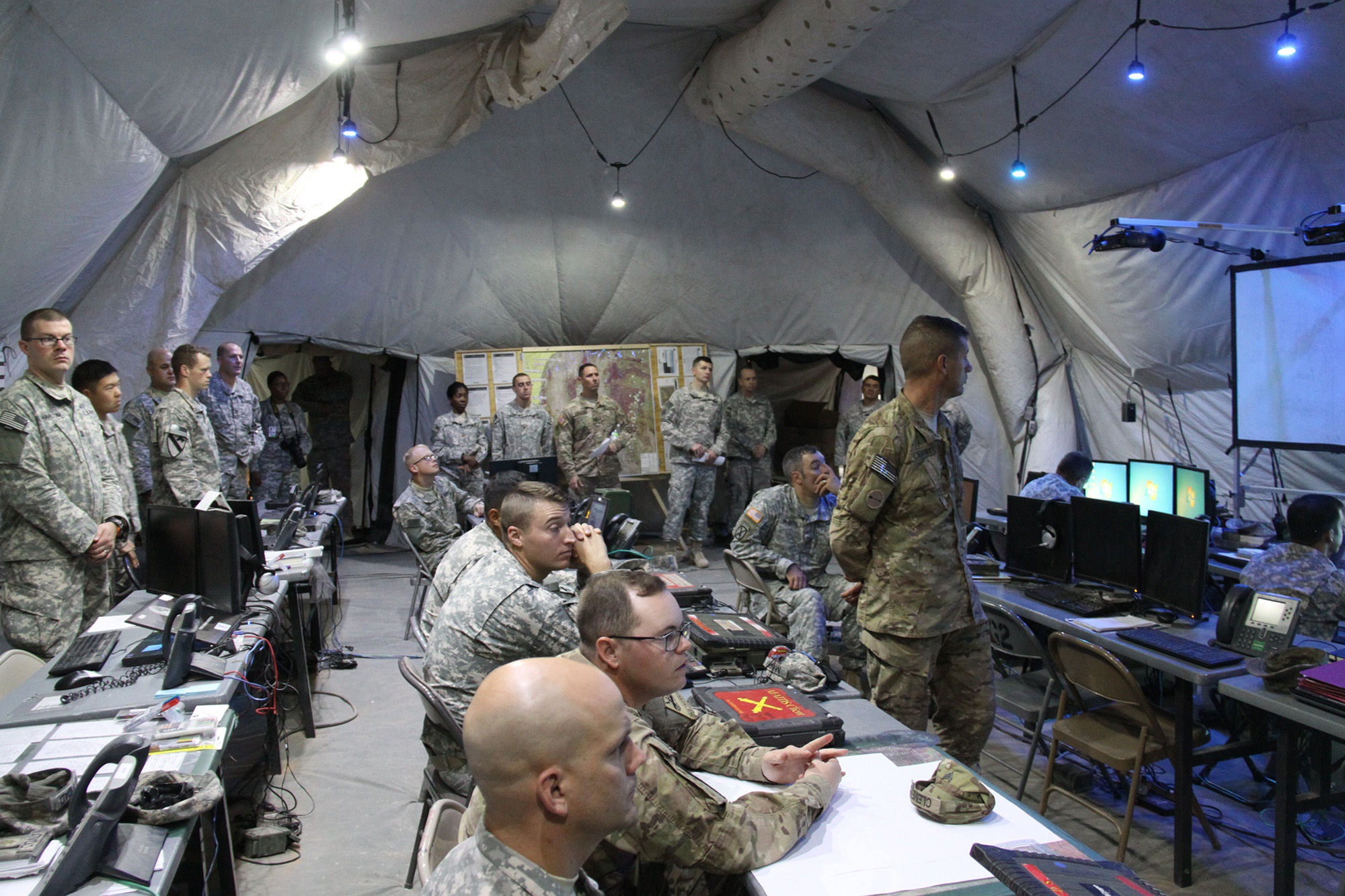
U.S. Soldiers assigned to the 2nd Armored Brigade Combat Team, 1st Armored Division (2/1 AD) perform mission command functions during the Army’s Network Integration Evaluation (NIE) 16.1 on September 25, 2015. Soldiers reacted to a warfighting scenario during the dynamic operational exercise that provides a decisive training environment for units to assess expeditionary command post capabilities. (Photo Credit: PEO C3T)
DISTRIBUTED MISSION COMMAND
What all of the building blocks have in common is their support for enhanced mobility — a critical enabler for Force 2025 and Beyond operations, which no longer rely on fixed bases and established infrastructure as the center of command activity. With advanced network and mission command capabilities available in vehicles and aircraft, a unit can deploy a smaller element forward into a hostile environment, while maintaining connectivity to supporting elements outside of the danger zone.
Known as “distributed mission command,” this concept aims to enable corps and division main command posts to operate primarily from home station, while deploying forward smaller formations armed with leaner mobile tactical command posts to deter and operate in multiple regions simultaneously. As they move through locations and phases of an operation, commanders can transition warfighting functions between home station and deployed command post elements according to the operational situation. They can also “jump” command post locations more quickly and seamlessly to keep up with the fight.
The Army is adding several technologies to its portfolio that enable distributed mission command, including capabilities for en route and early entry operations. The Enroute Mission Command Capability, which began fielding to the Global Response Force at Fort Bragg, N.C., in 2015, is a transport-plane integrated communications package providing military Internet access and mission command capability for in-flight Soldiers. Commanders can plan missions while onboard an aircraft with uninterrupted situational awareness from garrison to theater. Once on the ground, Soldiers will be able to use small satellite communications packages that can be set up quickly to connect small detachments and teams in the early phases of joint operations. When they do set up a command post, they can leverage secure wireless networks to rapidly get their information technology systems up and running.
Together, these technologies also act as building blocks, supporting units from home station to en route, early entry and deployed operations — with their “command post” adapting along the way.
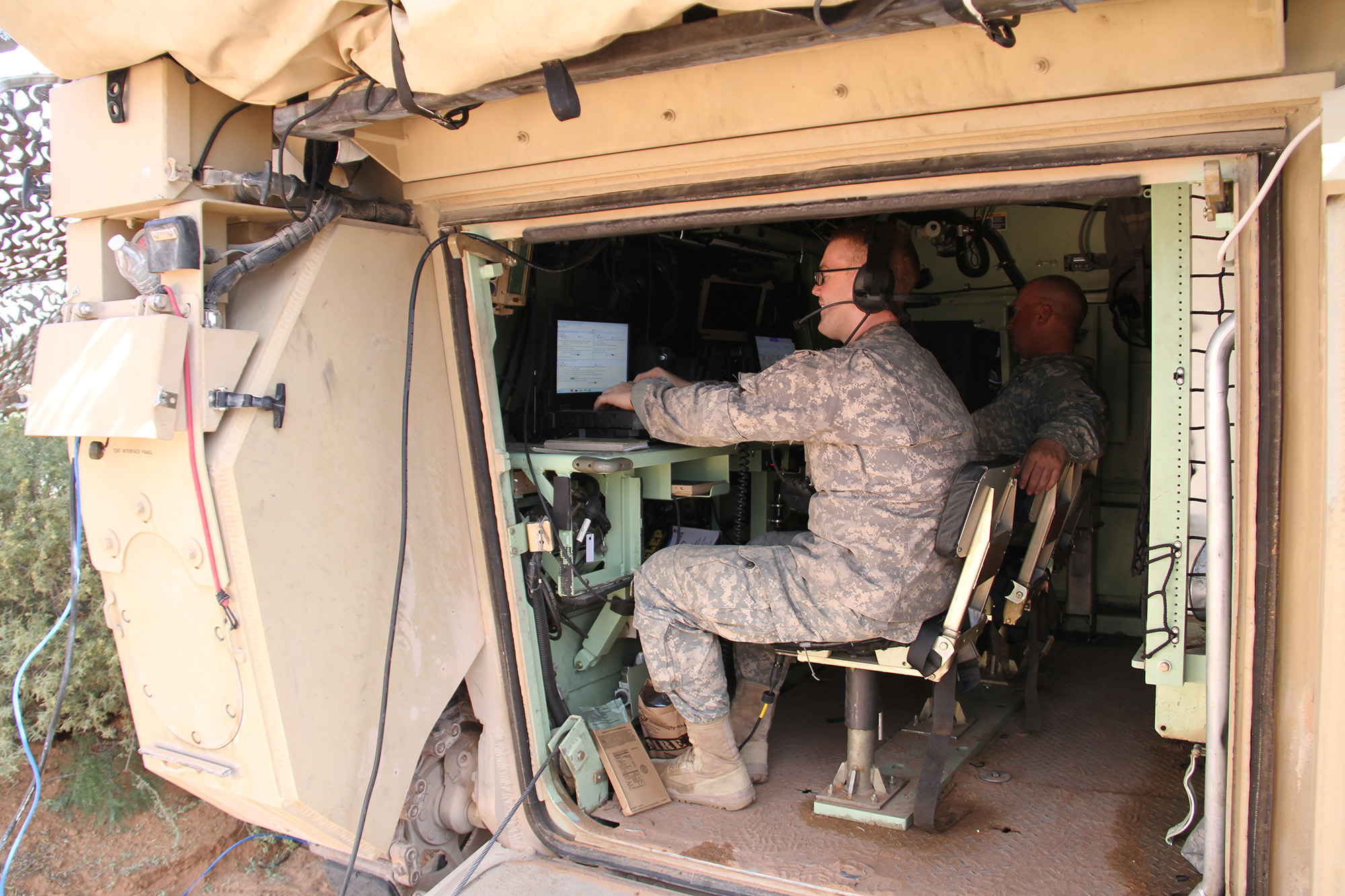
Combined Arms Battalion Mobile Tactical Command Posts, or CAB Mobile TAC, is a M1068 tracked vehicle with integrated mission command and radio capabilities, allowing commanders to “command from the hatch.” This product integrates the WIN-T Increment 2 Point of Presence to provide on-the-move network connectivity, both line-of-sight and beyond-line-of-sight. (Photo Credit: Edric Thompson, CERDEC)
PROTOTYPES DRIVE FEEDBACK
Soldiers haven’t been shy about sharing their opinions as the Army formalizes its command post path ahead. The acquisition and requirements team has sought and received operational feedback from the XVIII Airborne Corps, 1st Cavalry Division, 75th Ranger Regiment and other units on various emerging command post technologies.
At the NIEs and AWAs, Soldiers have conducted expeditionary missions using a range of command post prototypes integrated on tactical platforms, from the High Mobility Multi-purpose Wheeled Vehicle (HMMWV) to the M1068 tracked vehicle. They have also assessed enabling technologies such as the Command Post Computing Environment (CP CE), which converts the unique warfighting systems crowding today’s command posts onto a common digital framework to deliver a common operating picture from a common server.
“With [the common server] I have the possibility to reduce my footprint by three trucks, one generator and two trailers,” said Maj. Robert Richardson, brigade intelligence officer with the 2nd Armored Brigade Combat team, 1st Armored Division (2/1 AD), who evaluated CP CE at the NIE 16.2 in May.
Following the NIE/AWA 16.1, held in the fall of 2015, TRADOC and the System of Systems Engineering and Integration Directorate (SoSE&I), Assistant Secretary of the Army for Acquisition, Logistics and Technology (ASA(ALT)) synthesized Soldier feedback on nine different systems at various stages of maturity addressing Command Post 2025. To inform the requirements effort, the team produced technical recommendations regarding how each system enables expeditionary, scalable command posts, how they relate to existing Army programs, and additional opportunities for the Army to advance concepts that Soldiers found valuable.
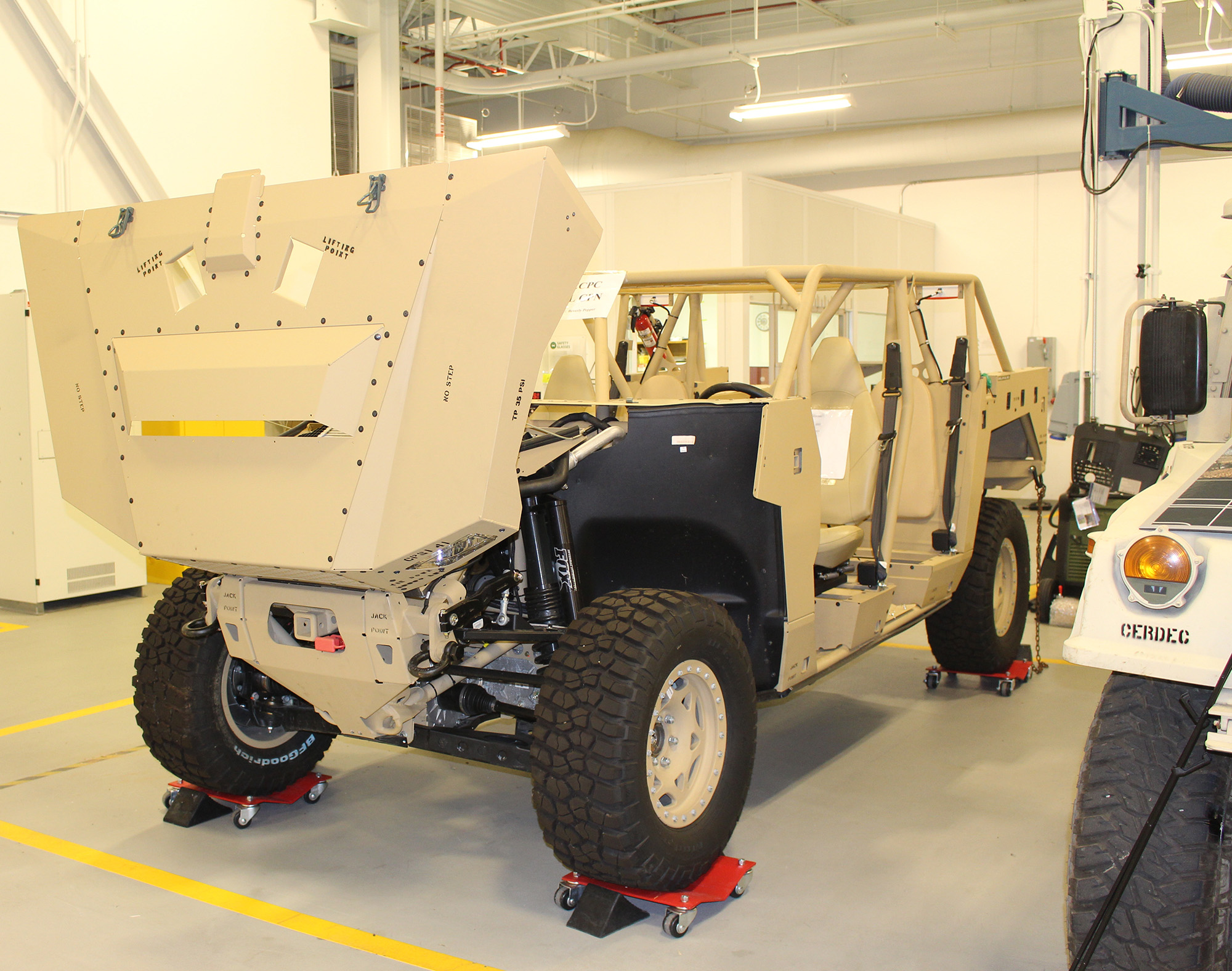
CPI Engineers in the CERDEC C4ISR Prototype Integration Facility are working on the Ultra Light Command Post Node, which aims to support the early-entry needs of the Global Response Force. (Photo Credit: Kathryn Bailey, CERDEC)
“We’re learning a lot of lessons regarding feedback from Soldiers on how things are useful and what things to change,” said Manning, whose CERDEC team tweaked each of its expeditionary command post designs following NIE 16.1 results. “That in the end will produce a better requirements document that will answer the needs of what we need going forward into 2025.”
Outside of NIE, CERDEC engineers are working on two other command post prototypes. One is focused on ultra-lightweight command post nodes for the Global Response Force, with operational demonstrations planned for this summer and fall. The design relies on the modularity concept, with each unit receiving a “base kit” to support communications and mission command as soon as they hit the ground, with the ability to add more mission packages as needed as a theater builds.
The second near-term project, known as Command Post Platform-Improved, attempts to streamline the two vehicles that support the Army’s legacy command post program of record into a single vehicle with less load to carry. If successful, it could be an interim solution to help bridge the gap between current capabilities and the Command Post Support Vehicle platform of the future.
Together, the experiments, analysis and feedback are helping the Army reach the goal of providing integrated, expeditionary command post capability that can adjust to different commanders, formations and operational conditions.
“It’s the cascading effect of all of these things,” Ernst said. “Let’s say that [a prototype] is not the solution we’re going to have in 2040 — it’s certainly a step towards that. It informs it, and provides incremental enhancements that improve agility and scalability.”







